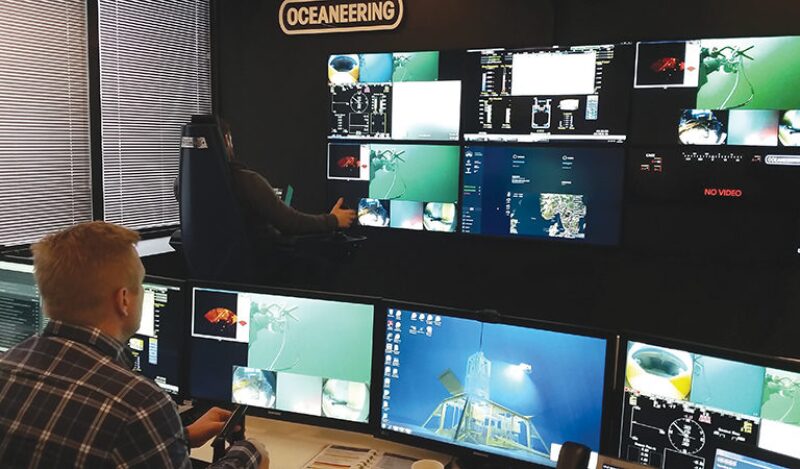The operators for remotely operated vehicles (ROV) will be getting more remote in the future as land-based control begins to become a reality.
Oceaneering has built an onshore control center in Stavanger which will be used to help control maintenance work offshore this spring, said Arve Iversen, ROV operations manager for Oceaneering, during a presentation at the recent Subsea Valley Conference in Oslo, Norway.
The support center in Stavanger harbor allows full control of ROVs using satellite connections and a semiautomatic control system that gives operators the ability to deliver commands—such as stab a tool into a port—without having to guide its every move in real time.
“Now you can have them at the support center and there is a huge saving opportunity there,” Iversen said.
On complex jobs, the system, which has been named the Remote Piloting and Automated Control Technology, is aimed at reducing the number of people who will need to be offshore, and allows experts to been called in on short notice to work onshore rather than having to fly offshore.
The savings would come in the form of fewer helicopter trips, less time lost in transit, and fewer people to support offshore, as well as reducing the safety risks and emissions associated with those flights.
Recently 13 passengers and crew died in the crash of a helicopter flying from a platform offshore Norway to an island off Bergen, an accident that investigators say appears to be due to a mechanical failure related to the main rotor.
The first onshore-controlled repair job for Statoil will entail helping to control an ROV that will be replacing anodes used for corrosion control on an offshore jackup rig. Last year, Oceaneering demonstrated that a land-based controller in the Gulf of Mexico could pilot a work-class ROV using a satellite link. Earlier this year offshore Norway, a controller in Oceaneering’s Mission Support Center in Stavanger used a multipurpose tool to clean marine growth off a subsea structure.
Pulling these operations off requires a degree of automation to help bridge the lag time, known as latency, caused by the time needed for the signal to travel up to a satellite and back to land-based control center. Even with advanced video and data compression, sending a command takes about one-half a second, but the large amount of information to transmit a high-definition view of the resulting action takes about 2 seconds, Iversen said.
“Latency is a challenge for navigator—a 2-second delay is quite a challenge,” Iversen said.
The company is using what it has learned from space operations to help bridge these gaps.


